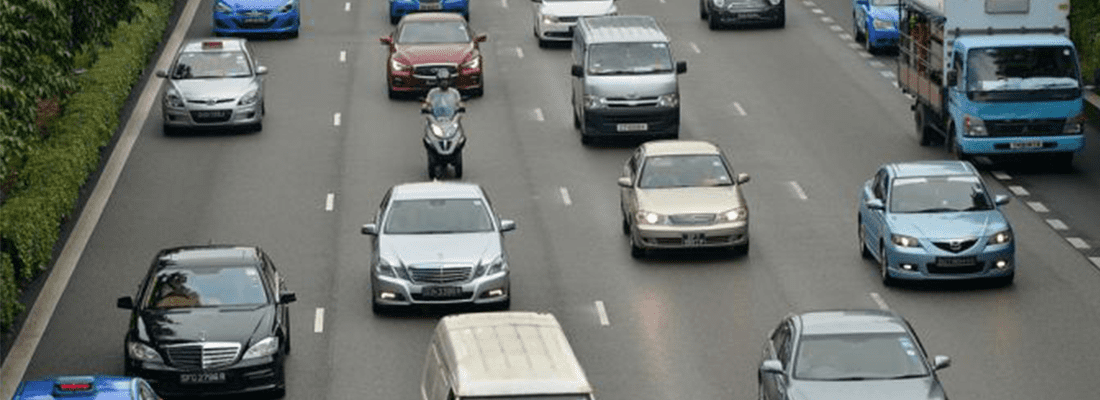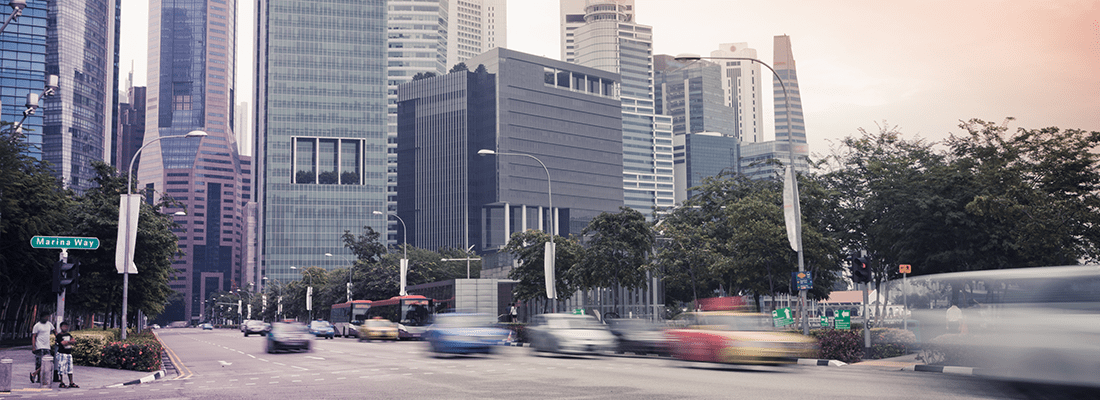Enabling smart transportation in today's interconnected world
The Asia-Pacific is leading the world's smart city evolution, with a number of cities across the region rolling out smart city initiatives and investing to build a better place for their people to live and work. In fact, a staggering US$63.4 billion has been earmarked for investment in smart city technology in the region, reflecting the overwhelming efforts by cities there to promote smart city transformations.
In Singapore, the nation strives to rev up its Smart City ambitions - and smart transport is one of the crucial elements to achieve that. As traffic jams continue to plague the land-scarce city daily, there is a need to think "smart" to minimise the impact of the swells in population and car ownership, and the resulting infrastructure bottlenecks. Most recently, the Ministry of Transport announced plans for the deployment of autonomous shuttles in Sentosa. Developed by ST Engineering, these "smart" shuttles can be hailed via smartphones and kiosks located around the island when trials start in 2019.
Looking closer, building transport infrastructure alone is not sufficient; Smart transportation is key to addressing ever-growing passenger demand. Simply adding more roads does not help - we need to optimise the capacity of a city - particularly in existing central business districts which cannot easily accommodate expansion.
To deliver this optimisation, we need ways to integrate the latest "hardware" developments - ie roads and rail lines, with connectivity to the latest digital solutions and innovations. When we say "smart", it is beyond what many cities are doing today. For example, traffic lights typically are timed and programmed based on historical data with settings that only alter slightly to accommodate traffic in day versus night, rigid to set-points that do not adjust.
With smart transportation using smart flow systems, we can assess traffic flows in real time thanks to sensors and video capture, to then adjust intervals based on dynamically-calculated data to respond to medians and peaks. The algorithm used to calculate intervals needs to be sophisticated, factoring in many data sets. This swathe of data is continually shifting, being added to and feeding multiple analysis engines which must be highly connected and intelligently provisioned.When it comes to transportation, instant response and accuracy are of the utmost importance. All data movements require connectivity to support seamless, real-time data transfer and responses. Massive quantities of data, generated from many endpoints, needs to be aggregated, processed and stored at the edge, where it is collected or created.
Vehicle-to-vehicle (V2V) and vehicle-to-infrastructure (V2I) communication, collectively referred to as V2X, allows access to traffic hotspots and overcrowding flashpoints for real-time analysis, so that authorities and different service providers can efficiently react and make decisions. This is particularly necessary when those decisions relate to emergency response or disaster response situations. To respond immediately, respective parties need to be interconnected - for example, transportation departments need direct access to IP camera and app service providers to deliver the latest traffic updates to mobile apps.

In Singapore, the ride-hailing industry is constantly innovating. Most recently, we saw the entry of MVL (Mass Vehicle Ledger), a ride-hailing application that promises to build an incentive-based blockchain mobility ecosystem in Singapore. Leveraging blockchain technology, MVL aims to move away from a centralised system, while linking all car-related services together and compiling all its lifetime data.
While road infrastructure requires interconnection, ride-hailing apps are also leveraging Equinix's platform to transmit, process and analyse data to ensure the delivery of high-quality customer experience with low latency, and high-performance and security. One such case is Iguazio, which digitally transforms businesses by streamlining data volumes for real-time, intelligent applications, to optimise performance in the smart transportation industry in the Asia-Pacific, offering a fully managed, real-time solution for high-performance artificial intelligence (AI) and event-driven applications. This is enabling them to help ride-hailing applications like Grab in the Asia-Pacific to achieve better utilisation of data and ultimately deliver a more seamless door-to-door transport service.
Locally, the Ministry of Transport and the Land Transport Authority announced that autonomous scheduled buses and autonomous on-demand shuttles will serve commuters in Punggol, Tengah and the Jurong Innovation District in Singapore from 2022. The government is also looking into more efficient transport systems via open data and analytics of commuters' data to improve the commuting experience. Further to that, the Centre of Excellence for Testing & Research of Autonomous Vehicles at Nanyang Technological University continues to work to develop standards for safe integration of self-driving vehicles in our transport system since 2016.
Hong Kong for instance, has four key strategies for smart transportation as part of its Smart City Blueprint: intelligent transport system and traffic management; public transport interchanges/bus stops and parking, environmental friendly transport, and smart airport initiatives.
Smart transportation is still in its infancy in many countries. We don't know how long it will take us to reach our Utopia, where all systems involving transportation are interconnected with each other - where car drivers, transport passengers and walking or cycling citizens are all communicating with, data-sharing with, and benefitting from, the amalgam of analyses which can be derived from this sort of interconnected approach. That is the near-future destination, and interconnection at the edge is how we will get there.
This article is retrieved from The Business Times.
Share your story
Do you have an innovation, research results or an other interesting topic you would like to share with the professionals in the infrastructure, traffic management, safety, smart mobility and parking industry? The Intertraffic website and social media channels are a great platform to showcase your stories!
Please contact our Sr Brand Marketing Manager Carola Jansen-Young.
Are you an Intertraffic exhibitor?
Make sure you add your latest press releases to your Company Profile in the Exhibitor Portal for free exposure.







